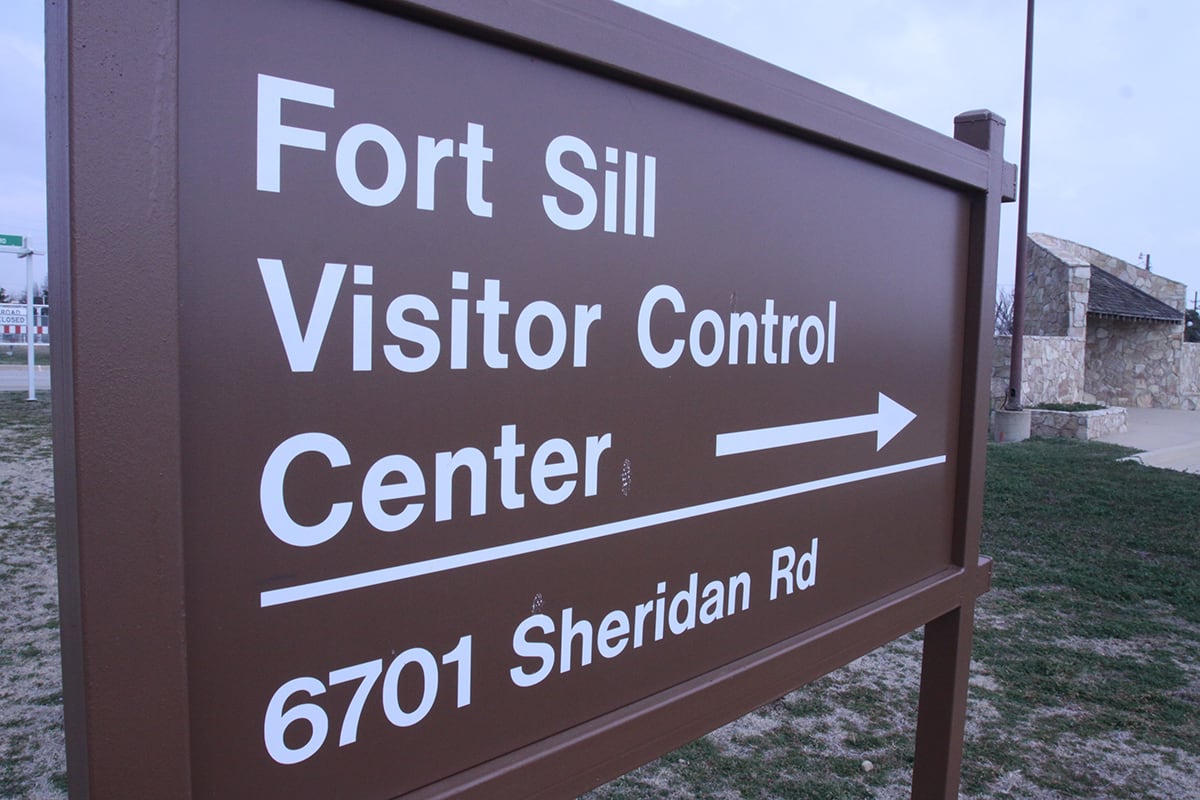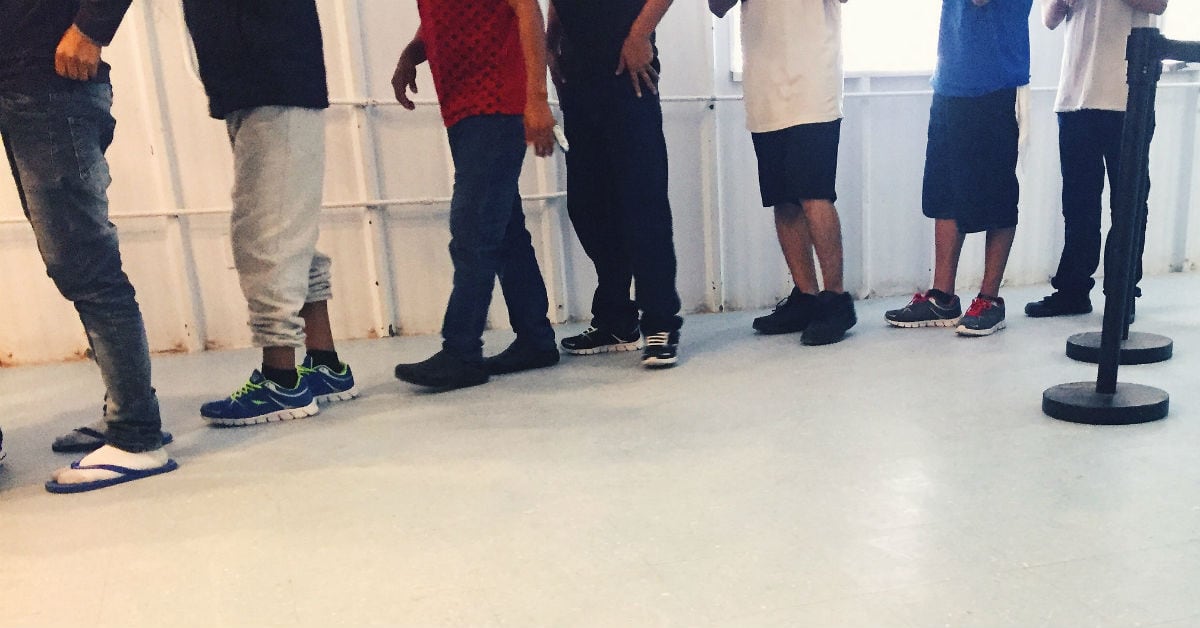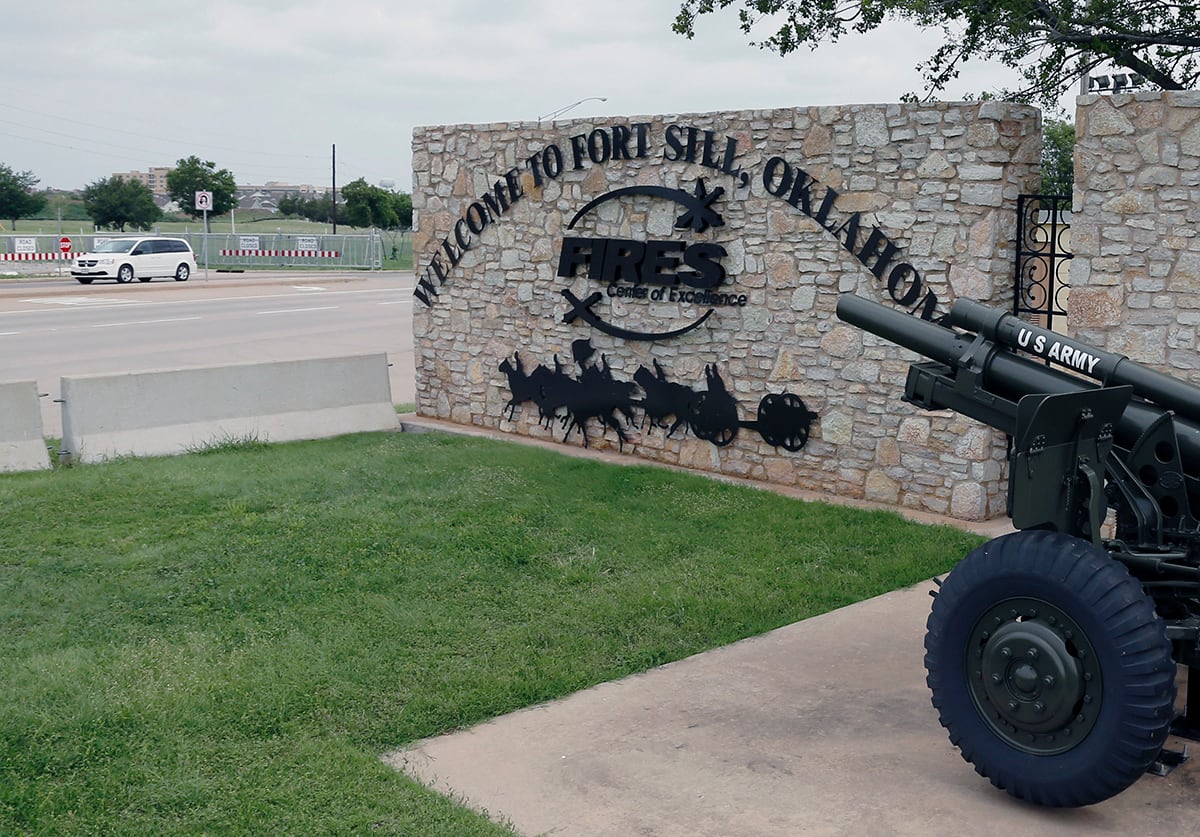OKLAHOMA CITY — A U.S. Army base in Oklahoma that the federal government says will temporarily house children crossing the border without their parents was used during World War II as a Japanese internment camp.
Historical data from the National Park Service and private organizations show Fort Sill was among at least 14 Army and Department of Justice facilities nationwide where Japanese Americans and Japanese immigrants were interred. The Army’s War Relocation Authority held about 120,000 Japanese and Japanese Americans in “relocation centers” during the war with Japan.
Tom Ikeda, executive director of Densho, an organization that documents the history of the United States' internment of Japanese people, referred to Fort Sill as "a place layered in trauma." He pointed to its use as a boarding school for Native American children and as a prisoner-of-war camp for Apache tribal members.
"Sites like this need to be permanently closed, not recycled to inflict more harm," Ikeda said Wednesday in a statement. "We need to stay vigilant and we need to be showing up at these places in protest. No one showed up for Japanese Americans during WWII, but we can and we must break that pattern now."
RELATED

Ikeda's perspective echoed calls last year from state and federal leaders and locals who objected to the Trump administration looking into housing immigrant children near the site of a former internment camp in Rohwer, Arkansas. Those plans were scrapped.
The Office of Refugee Resettlement, overseen by the Department of Health and Human Services, said Tuesday it plans to house up to 1,400 migrant children at Fort Sill, near Lawton, Oklahoma , about 90 miles southwest of Oklahoma City.
An emailed request for comment Wednesday from Health and Human Services was not returned.
Darrell Ames, spokesman for Fort Sill, said the post's information indicates that following America's entry into World War II the government directed the base to build internment camps for Japanese Americans, but nothing in the record reflects the camps were actually occupied by Japanese Americans. Instead, the camps were used by prisoners of war from Japan, Germany and Italy.
Officials at the Fort Sill National Historic Landmark & Museum said they have no information about the base's use as an internment or POW camp because that part of its history is not part of its mission statement.
Shawn Iwaoka, who works in collections at the Japanese American National Museum in Los Angeles, said confusion abounds because camps were referred to by different names, including "relocation centers" or "detention camps" and because the camp at Fort Sill was much smaller than camps such as Manzanar in California, which housed thousands of people. The museum letters a man detained at Fort Sill wrote to his wife at another camp in California with a pre-preprinted label that said "internee of war."
"The euphemisms were rampant to kind of soften what they really were. The museum's position is that they should be called concentration camps," Iwaoka said. "They were going into people's homes and forcing them to leave their property."
RELATED

It's unclear exactly when the camp at Fort Sill opened, but an encyclopedia Densho publishes shows it closed in June 1942, almost seven months after the Japanese bombed the American fleet in Pearl Harbor, Hawaii. That pushed the U.S. into war and led the government to open internment camps.
Densho's records and the book "Confinement and Ethnicity: An Overview of World War II Japanese American Relocation Sites," included on the National Park Service website, show from 359 to more than 700 people were interred at Fort Sill, including three German nationals. A guard shot a Japanese man to death while he was distraught and trying to escape. The Densho Encyclopedia says detainees lived in tents and that summer temperatures climbed to 100 degrees Fahrenheit (37.8 degrees Celsius).
Record numbers of unaccompanied children have been arriving at the border, largely from Guatemala, Honduras and El Salvador. In May, border agents apprehended 11,507 children traveling alone. The Office of Refugee Resettlement has come under fire for the death of two children who went through the agency's network of shelters and is facing lawsuits over the treatment of teens in its care. The office has said it must set up new facilities to accommodate new arrivals or risk running out of beds.
During another migration surge in 2014, the Obama administration also used Fort Sill to house unaccompanied migrant children.
Associated Press writers Tim Talley in Oklahoma City and Susan Montoya Bryan in Albuquerque, New Mexico, contributed to this report.





